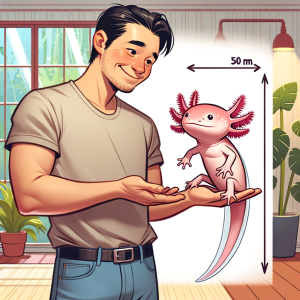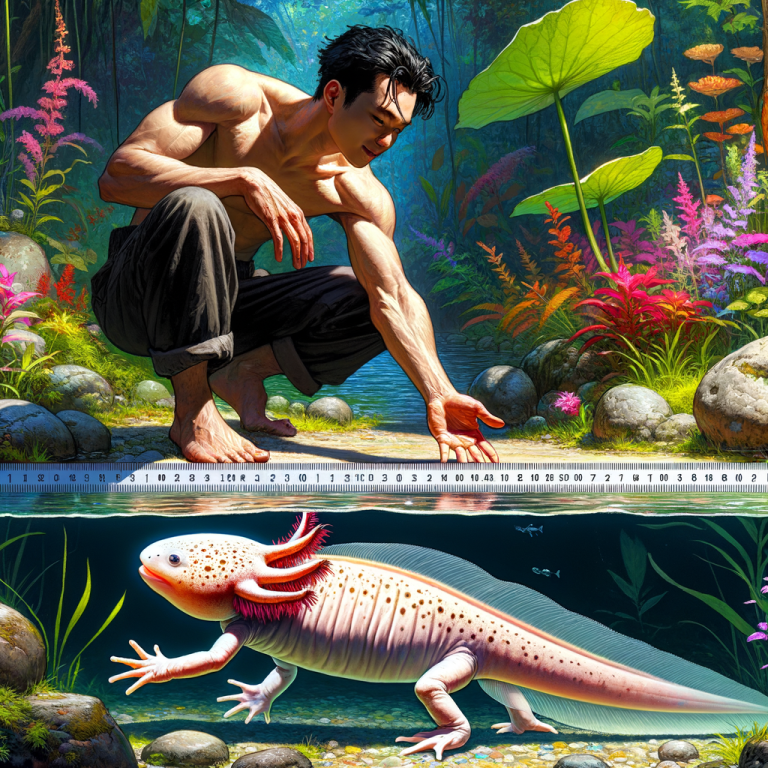Axolotl Size Compared to Human
Ever wondered how big an axolotl is compared to a human? In this article, I’ll give you a brief overview of the axolotl and explain why they’re so fascinating. We’ll also explore their size, unique characteristics, and some interesting facts about these incredible amphibians.
Discovering the Surprising Size of Axolotls Compared to Humans
If you’ve ever wondered how the size of an axolotl compares to that of a human, you’ll be amazed by the surprising findings. Dive into this article to uncover the fascinating comparison and gain a new perspective on these unique creatures.
Axolotl Size
When fully grown, the average size of an adult axolotl ranges from 6 to 18 inches (15 to 45 centimeters) in length. This makes them significantly smaller than the average human, with the largest axolotls being about the size of a small cat.
As axolotls grow, their size changes dramatically. They start as tiny larvae, only a few centimeters long, and can grow up to ten times their original size as they reach adulthood.
When comparing axolotl size to human size, it’s clear that these amphibians are much smaller in comparison. Their diminutive size is one of the many unique characteristics that make them fascinating creatures to study and observe.
Axolotl Characteristics
When it comes to the unique physical characteristics of the axolotl, there are several key traits that set this amphibian apart from others. These include:
- External gills that allow them to breathe underwater throughout their entire lives
- A neotenic trait, meaning they retain their larval features even as adults
- Ambystoma mexicanum, the scientific name for the axolotl
As for behavioral traits, axolotls are known for their relatively calm and docile nature. They are also capable of regenerating lost body parts, a unique ability among amphibians.
Geographically, axolotls are primarily found in the lake complex of Xochimilco, Mexico, where they are considered a critically endangered species due to habitat loss and pollution.
Overall, the axolotl’s physical and behavioral characteristics, as well as its limited geographical range, make it a fascinating subject for scientific study and conservation efforts.
 Axolotl Facts
Axolotl Facts
When it comes to axolotls, there are several interesting facts that make them unique creatures:
A. Interesting Facts about Axolotls
- Axolotls are known for their regenerative abilities, being able to regrow lost limbs and even parts of their brain and heart.
- They have the ability to breathe through gills, similar to fish, but can also absorb oxygen through their skin like amphibians.
- Unlike other amphibians, axolotls reach sexual maturity without undergoing metamorphosis, allowing them to retain their larval features into adulthood.
B. Comparison of Axolotl Size to Other Amphibians
When comparing the size of axolotls to other amphibians, it’s important to note that:
- An adult axolotl can reach an average size of 9-12 inches (23-30 cm) in length, making them larger than many other amphibians.
- Compared to human size, axolotls are relatively small, but their unique characteristics make them stand out among their amphibian counterparts.
C. Significance of Axolotls in Scientific Research
Axolotls hold significant value in scientific research due to their regenerative abilities and unique biological features:
- Scientists study axolotls to understand the process of regeneration, with the hope of applying this knowledge to human tissue regeneration in the future.
- Their ability to remain in a larval state throughout their lives provides valuable insights into developmental biology and aging processes.
Overall, the axolotl’s size compared to human, along with its fascinating characteristics and scientific significance, make it a truly remarkable creature worth learning about.
Conclusion
After exploring the various aspects of the axolotl, it is clear that these unique creatures have a significant impact in the scientific community and are fascinating in their own right. From their size to their behavioral traits, axolotls continue to captivate researchers and enthusiasts alike.
When considering the size of an axolotl compared to a human, it is evident that these amphibians are much smaller in stature. An adult axolotl typically reaches an average size of 9-12 inches (23-30 cm), while a human can range from 5-6 feet (152-183 cm) in height. This stark contrast in size highlights the distinct nature of the axolotl and its place in the natural world.
Furthermore, the significance of axolotls in scientific research cannot be understated. Their regenerative abilities and unique characteristics make them valuable subjects for study, offering insights into various biological processes and potential medical applications.
In conclusion, the axolotl’s size and significance make it a compelling subject for further exploration and study. As we continue to uncover more about these remarkable creatures, their impact on scientific research and our understanding of the natural world will undoubtedly continue to grow.


Comments are closed.